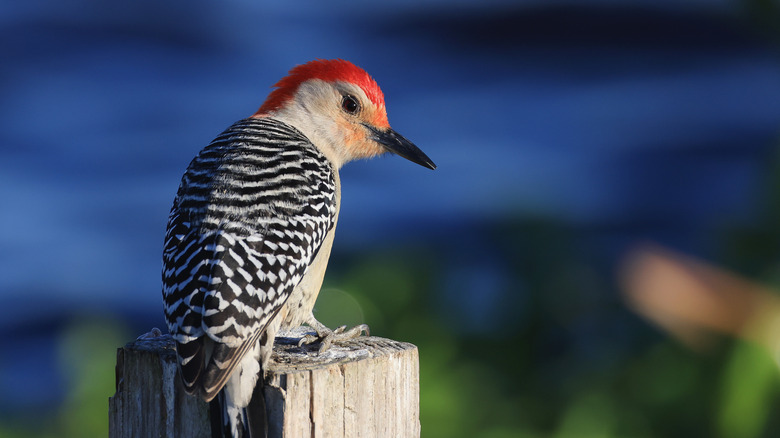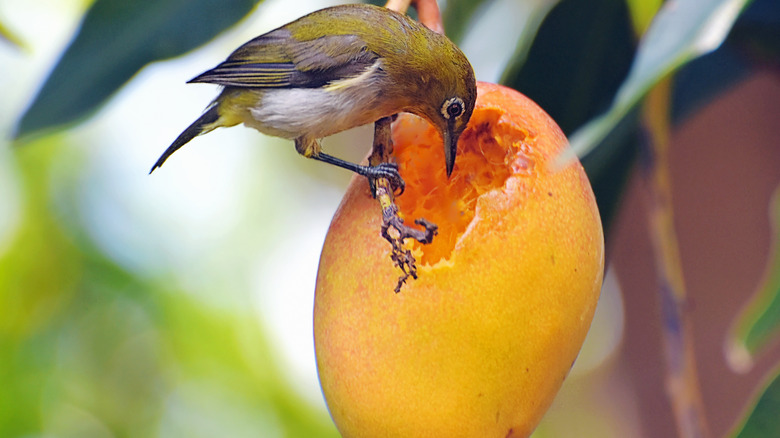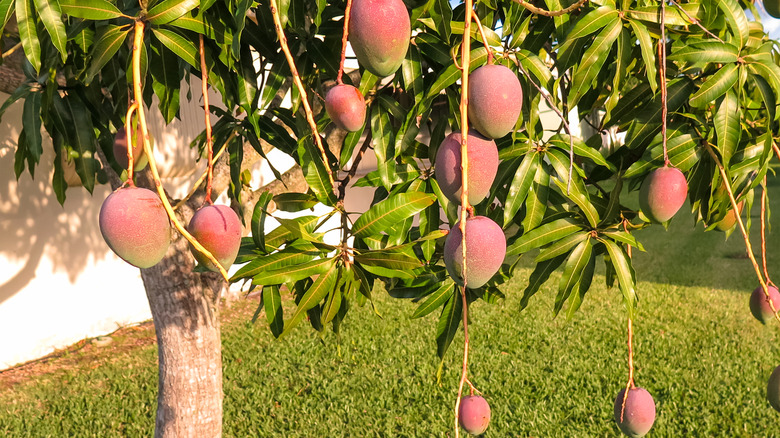This Fast-Growing Fruit Tree May Be The Key To Attracting More Birds To Your Yard
If you love having a yard and garden, then you know birds are essential for maintaining a thriving backyard ecosystem. Not only do birds help keep pesky bugs at bay, but just seeing and hearing them around your home can also boost your mood. However, attracting birds to your garden might be a little tricky. They like specific environments with enough room to build nests, nearby water sources, and lots of food. If you're struggling to entice birds to come close, planting fruit trees in your yard is a great option. In fact, planting mango trees (Magnifera Indica) will have birds flocking to your yard to eat the irresistible treats and nest in the large, camouflaging leaves.
This alluring tree grows in tropical climates and USDA zones 10 to 11. In America, mango trees are most commonly grown in the southern parts of Florida and California, as well as in Hawaii. While most wild mango trees can grow to be over 100 feet, cultivated mango trees, including dwarf varieties, grow between 10 and 33 feet tall. They gain height quickly and can grow 5 feet taller each year if provided with the right care. Mango trees start producing fruit after two to seven years of being planted. However, birds may eat the majority of the mangos, not leaving much leftover for you. But hey, mango trees are good for the environment, promoting soil conservation, biodiversity, and more.
Mango trees bring all the birds to the yard
Birds make their nests in spring because that's when insects and vegetation are bountiful. And birds that choose a fruit tree will have immediate access to a food source when the fruit is ripe, making them a good choice. Mango trees, in particular, are not only a suitable diet option, but they also provide twigs and leaf material for birds to make their nests. The mango trees also provide excellent cover with their 12 to 16 inch leaves, allowing the birds to remain unseen when scouting for prey and roosting.
Depending on where you live, most bird varieties are attracted to fruit trees. In tropical climate areas like Hawaii, you'll find mango trees attract 'io, or Hawaiian hawks. Some people may also see woodpeckers, mynas, doves, parrots, orioles, and tanagers feeding on the fruit, among other species. The mango trees feed birds, mammals, and insects alike during their ripe season, so these trees will benefit almost all of the wildlife that visits your yard.
How to add a mango tree to your yard
Because mango trees grow quickly, they may start attracting birds just a few years after planting. When it comes to planting a fruit tree in your backyard, you can put it straight in the ground or grow it in a container. You can easily grow mango trees from seed or find the plants for sale at local nurseries. If you plant a 3-gallon potted mango tree, it can take up to three years before you'll start seeing fruit, depending on the tree variety. If starting from seed, you'll have fruit in about four to seven years.
Mango trees will suffer greatly if consistently exposed to 30 degrees Fahrenheit or lower. Look for a bright, sunny area to plant them during spring. They also need shelter from strong winds and well draining soil. Also, keep your mango trees healthy by regularly pruning their branches. When the trees are young, prune them to develop a sturdy trunk. Once they are more mature, cut them right after harvest and right before blooming to promote a healthy and productive tree. Mango trees can quickly become overgrown if left unmanaged. Place mulch around your tree to support retaining moisture within the soil, and regularly check for pests and potential infestations. Come harvest season, ensure you regularly pick ripened mangos, and birds will often help themselves to the delicious fruit as well.


